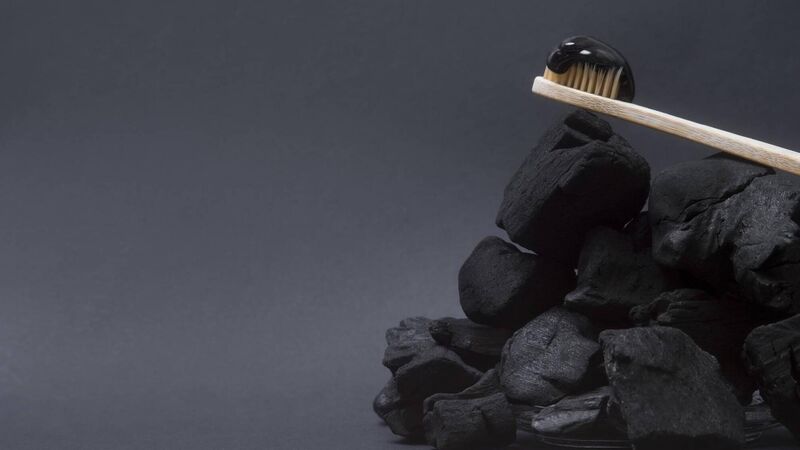Natural Health: Whitening your teeth with activated charcoal

Pic: iStock
Red wine, tea, coffee, turmeric, leafy greens, and dark berries can all lead to teeth staining.
Often used in oral care products such as toothpaste, mouthwash, and even toothbrush bristles, activated charcoal helps remove stains and plaque from teeth.
Activated charcoal is carbon produced from willow bark or coconut fibre subjected to air or steam at high temperatures, causing it to develop an extensive network of fine pores and become highly adsorbent. Adsorbency is different to absorbency in that it binds to toxins for safe removal.
To use activated charcoal powder for stain removal, dip your toothbrush in plain water (or use a little natural toothpaste) and then dip it in the activated charcoal. It is messy and turns your mouth black, but it rinses away with water.
A weekly or monthly mouthwash using a 3% hydrogen peroxide solution is frequently recommended to remove stains from your teeth.
Many reach for baking soda for whitening teeth and removing stains. However, it can be too harsh for some, particularly if the teeth are already pitted or prone to staining.
Activated charcoal can be purchased from health stores. If you can only source it in capsules, open and pour the contents into the bottom of an eggcup for ease of use.
Painful joints in the hands can be difficult to treat topically as the pain relief ointment will soon be washed off.
Also, topical pain relief products often contain ingredients such as menthol and capsaicin, which can lead to a burning sensation if they come in contact with the eyes, nose, mouth, or other delicate areas.
Supplemental remedies often work better, treating pain and inflammation from the inside out.
Glucosamine sulphate helps repair cartilage, tendons, and ligaments and pairs well with chondroitin sulphate, which increases lubrication and shock absorption capabilities in the joints.
It is common to find a combination remedy pairing glucosamine and chondroitin as they work synergistically, particularly in a remedy formulated to treat joint or back pain.
Hyaluronic acid is well known in the beauty industry for its ability to hydrate and plump the skin. It is also vital in supporting the structural framework and maintaining hydration in the cartilage.
Connective tissue integrity is lost as we age, and oral hyaluronic acid can improve function and reduce pain in affected joints. You will need to take up to 240mg daily for best results.
Try Solgar’s Hyaluronic Acid Complex tablets, which provide 120mg of hyaluronic acid plus BioCell Collagen II extract, chondroitin, and vitamin C.
I frequently recommend ginger tea to treat pain and inflammation because it’s effective, low-cost, and straightforward to make.
Ginger helps to stimulate the body to produce natural anti-inflammatory substances and reduce pain receptor activity. Grate or finely chop a half-inch piece of fresh ginger root into a small teapot to make the tea. Cover with boiling water and steep for around 15 minutes.
For arthritic conditions, add a dash of apple cider vinegar (around five to 10ml) and stir in raw honey to taste.
- If you have a question for Megan Sheppard, please email it to feelgood@examiner.ie
- NOTE: The information contained in this column is not a substitute for medical advice. Always consult a doctor.

Celebrating 25 years of health and wellbeing











